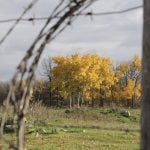
Tag Archives veterinary medicine

Scientist to expand his reproductive health research to beef cattle
A University of Saskatchewan veterinarian is exploring how research into the reproductive health of dairy cows as well as emerging technologies can be applied to beef cattle

Veterinarian pushes back against bias in ag and vet communities
Despite the vet shortage, some veterinarians feel less than welcome, says one vet

mRNA vaccines unlikely to replace common cattle vaccines, but could help contain foot-and-mouth disease in future

Mud and ornery heifer make veterinary practice ‘fun’
Veterinary Case Study: Ron introduces a vet student to the fine art of managing manure, mud and high-strung heifers

Improving vaccination success in your beef herd
Get the most out of your vaccine investment by transporting, handling, storing and administering them properly

Core vaccines recommended for western Canadian beef herds
When looking at vaccinating for diseases beyond the core vaccination recommendations, consider the disease risk, vaccine efficaciousness and the cost-benefit of each vaccine

Dealing with retained placentas in beef cows
Strive to prevent retained placentas as much as possible, says a large animal vet

Young vets share challenges and joys of rural practice
Anything from winter weather to community dynamics can affect a new vet’s experience living and working in a rural area

Keeping calves healthy
Research on the Record with Reynold Bergen

Contracted and lax tendons in newborn calves
A look at the potential causes and treatments of limb problems in new calves



